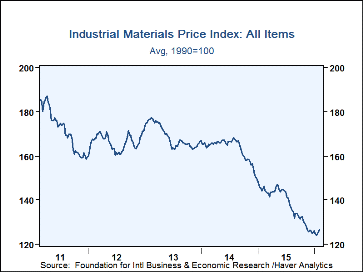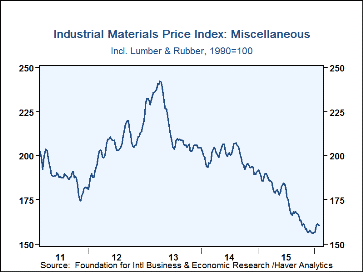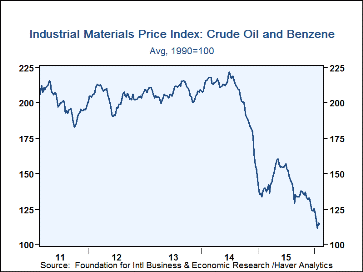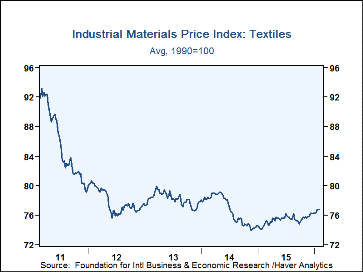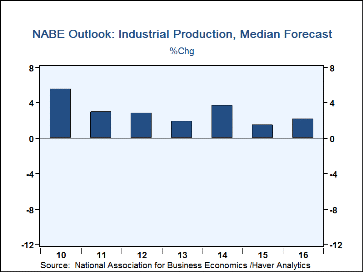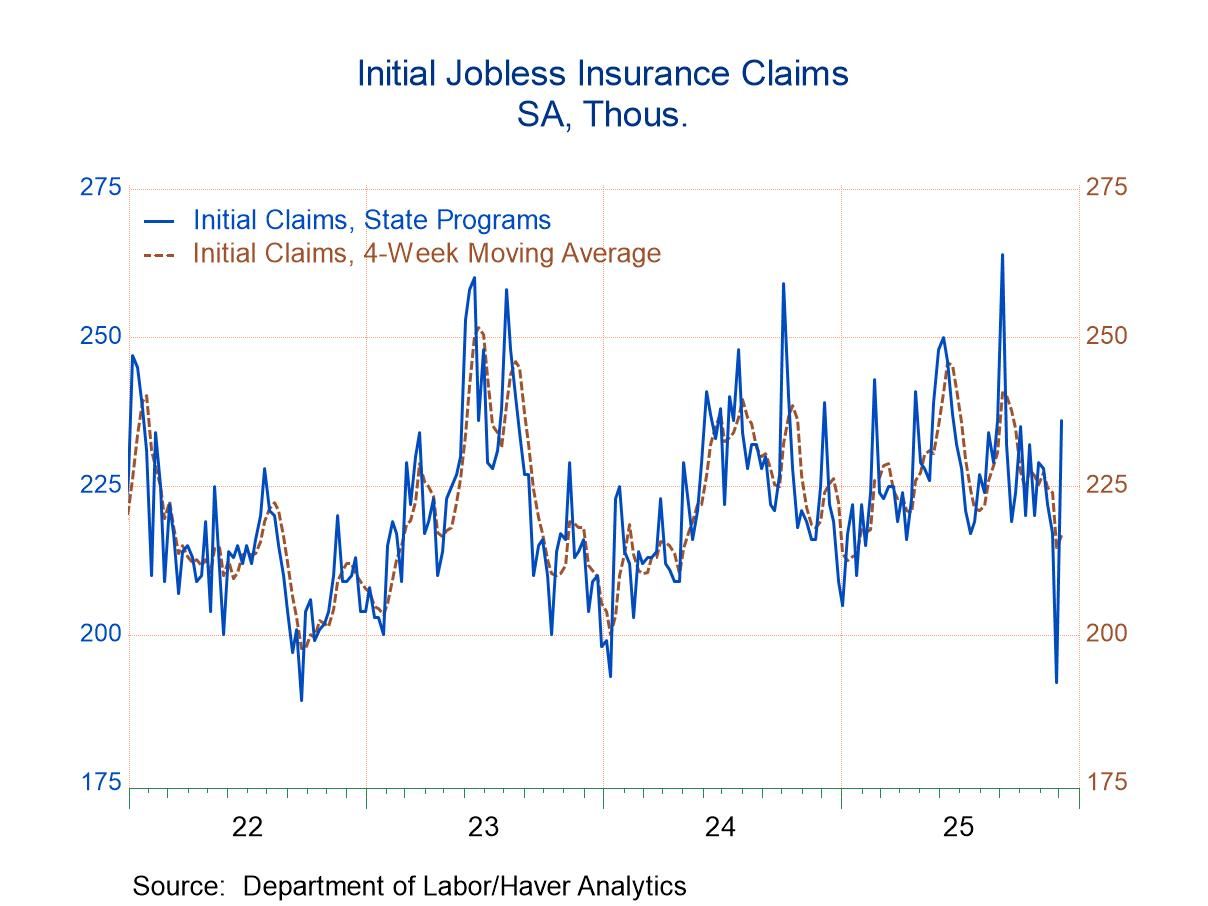 Global| Feb 11 2016
Global| Feb 11 2016FIBER: Industrial Commodity Prices Improve
by:Tom Moeller
|in:Economy in Brief
Summary
Despite continued weakness in factory sector output around the world during January, industrial commodity prices showed scattered improvement. The industrial price index from the Foundation for International Business and Economic [...]
Despite continued weakness in factory sector output around the world during January, industrial commodity prices showed scattered improvement. The industrial price index from the Foundation for International Business and Economic Research (FIBER) increased 1.3% during the last four weeks. Nevertheless, prices remained down 12.7% during the past year as worldwide factory output remained under pressure. In the U.S. alone, factory sector production fell 0.1% in both November & December (+0.8% y/y).
Within the sector groupings of prices, the FIBER indexes showed gains for some products. In the metals sector, steel scrap prices increased 17.6% last month, but remained down roughly one-half y/y. Aluminum prices rose 3.6% during January though have moved 17.8% lower during the last year. Copper scrap prices continued on the down-trend, off 0.7% m/m and down 18.1% y/y. In the miscellaneous price grouping, rubber prices improved 9.9% last month, but they were off by nearly one-quarter y/y. Framing lumber prices have realized little improvement due to housing market strength. They fell 4.7% during January and 15.7% y/y. Prices for structural panels similarly were down 2.8% in the last month and 7.4% during the last year. In the crude oil & benzene area, the cost of WTI crude oil continued its downward trend to $27.45 per barrel yesterday. The roughly 12.0% price decline in the last month left prices off nearly 40.0% y/y, down by roughly three-quarters from the August 2013 high of $110.17. Prices for the petro-chemical benzene fell 12.6% last month to the 2009 low, down by roughly two-thirds from the 2014 high. Prices in the textile sector have shown comparative strength. Cotton prices have been stable since September, but down by two-thirds from the 2011 high. On the strong-side have been burlap prices, up roughly one-third y/y.
Overall, commodity prices could be nearing a bottom. The current industrial output projection from the National Association for Business Economics calls for 2.2% U.S. production growth in 2016, up from 1.5% growth this year. During the last ten years, there has been a 52% correlation between the three-month change in prices and the change in industrial output.
Commodity price data can be found in Haver's DAILY, WEEKLY, USECON and CMDTY databases.
| FIBER Industrial Materials Price Index (1990=100) | 1-Mth % | 3-Mth % | 6-Mth % | 12-Month % | 2015 % | 2014 % | 2013 % |
|---|---|---|---|---|---|---|---|
| All Items | 1.3 | -1.6 | -6.9 | -12.7 | -16.3 | -10.0 | -2.9 |
| Textiles | 0.7 | 1.3 | 1.6 | 3.2 | 2.2 | -4.2 | 0.4 |
| Cotton (cents per pound) | -1.5 | -1.0 | -1.3 | 1.4 | 2.6 | -24.2 | 10.8 |
| Metals | 5.2 | 0.6 | -10.5 | -22.7 | -27.8 | -8.7 | -3.5 |
| Aluminum ($ per metric ton) | 3.6 | 4.2 | -3.0 | -17.8 | -19.2 | 9.4 | -15.8 |
| Copper Scrap (cents per pound) | -0.7 | -10.5 | -11.6 | -18.1 | -27.0 | -12.0 | -6.8 |
| Steel Scrap ($ per ton) | 17.6 | 9.8 | -29.3 | -48.4 | -53.8 | -18.6 | 8.4 |
| Crude Oil & Benzene | -6.8 | -16.1 | -20.2 | -17.2 | -19.4 | -26.5 | 0.8 |
| Crude Oil (WTI, $ per Barrel) | -11.2 | -32.1 | -30.8 | -36.8 | -35.8 | -43.2 | 10.3 |
| Miscellaneous | 2.5 | 1.6 | -3.6 | -13.5 | -18.0 | -6.7 | -6.8 |
| Framing Lumber ($ per 1000 board ft.) | -4.7 | -7.6 | -8.1 | -15.7 | -16.4 | -1.6 | 3.5 |
| Natural Rubber (cents per pound) | 9.9 | 5.5 | -14.5 | -21.1 | -22.5 | -32.3 | -9.8 |
Tom Moeller
AuthorMore in Author Profile »Prior to joining Haver Analytics in 2000, Mr. Moeller worked as the Economist at Chancellor Capital Management from 1985 to 1999. There, he developed comprehensive economic forecasts and interpreted economic data for equity and fixed income portfolio managers. Also at Chancellor, Mr. Moeller worked as an equity analyst and was responsible for researching and rating companies in the economically sensitive automobile and housing industries for investment in Chancellor’s equity portfolio. Prior to joining Chancellor, Mr. Moeller was an Economist at Citibank from 1979 to 1984. He also analyzed pricing behavior in the metals industry for the Council on Wage and Price Stability in Washington, D.C. In 1999, Mr. Moeller received the award for most accurate forecast from the Forecasters' Club of New York. From 1990 to 1992 he was President of the New York Association for Business Economists. Mr. Moeller earned an M.B.A. in Finance from Fordham University, where he graduated in 1987. He holds a Bachelor of Arts in Economics from George Washington University.


